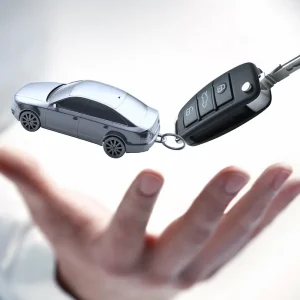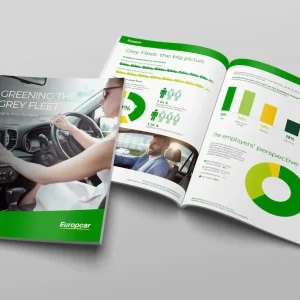
If you’re running one of the UK’s 5.5 million small and medium-sized businesses (SMEs), servicing customers and growing the business is the top priority. Delving into the detail of employee mobility may seem like an unnecessary nuisance alongside this commercial focus – and that’s where SMEs might be missing a trick.
Business owners who think their company is too small to benefit from professional mobility solutions might be missing out on some important advantages. Even organisations with fewer than 25 business travellers can benefit from fully managed mobility and a structured travel policy.
Working with a specialist B2B mobility provider also gives smaller organisations access to a large and diverse of portfolio of vehicles that can meet the company’s needs as it changes and evolves.
One of the key challenges for SMEs is that employee travel is often the responsibility of an office manager or executive assistant, and this is where seeking external expertise can help.
A good partner can, for example, provide better insight into employee travel patterns. They will help to identify the mobility requirement, in line with business objectives, to best move your people, equipment and goods. Working with an expert partner means the whole process is managed for you: from analysis of current travel patterns to identifying the right solutions, implementation and optimisation.
There are even apps that can be programmed in line with travel policies to enable employees to make better travel choices. This will streamline the process to identify who needs what vehicle, when and where – and how they can make that journey more efficient to reduce mileage, costs and emissions.
Tracking and reporting on emissions is a growing requirement for every business, irrespective of size, and managed mobility solutions can support reduced emissions both through mileage reduction and the fact that employees will be driving newer, well-maintained, lower-emission vehicles.
Managed mobility also reduces exposure to risk. Business owners have a duty of care to their employees. If they are driving their own, older, often poorly maintained vehicles for work and are involved in a collision, the company could be liable for costs, which can be tough for smaller organisations and may not be covered under every liability policy.
Recent research by the AA found that one-in-15 (7%) of grey fleet drivers could not remember if they had declared their visits to clients, off-site meetings and conferences to their insurer. That means their policy may provide inadequate cover, testing the reputation and liability of their employer.
A well-thought-through mobility solution based on real needs also helps employees do a better job by providing access to the right transport at the right time.
Sometimes, the smallest details matter. When I was working in a branch, I remember one customer who usually drove a Porsche, but borrowed a Vauxhall to visit new clients to make the right (non-flashy) first impression.
Businesses sometimes need vans or large cars for short periods of time when transporting goods and delivering services. Also, a last-minute business opportunity may require a same-day vehicle change. This is where SMEs need on-demand access to an extensive fleet, as well as replacement vehicles when needed, to meet business peaks, flows and unexpected changes.
As SMEs continue to evolve, grow, expand and change, partnering with a mobility expert to keep them moving in the right direction can help them become more efficient and more successful. If you’re building a business, it’s worth taking a closer look at your mobility plans to review and re-imagine your travel strategy.
Andy Bland is head of business rental development UK and Ireland for Enterprise Mobility





